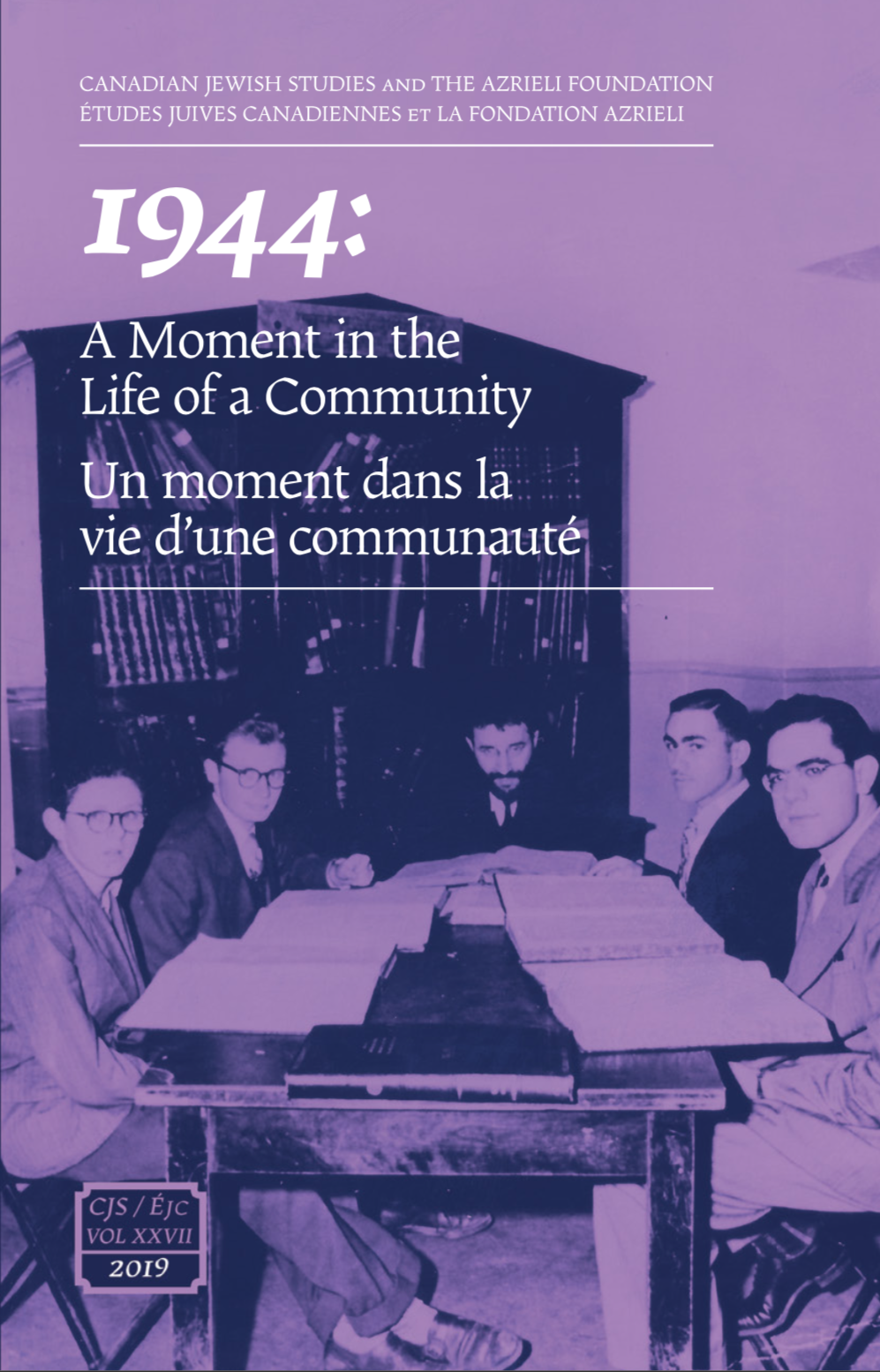1944: A Preview of Much of What Would Follow
DOI :
https://doi.org/10.25071/1916-0925.40106Résumé
Cet article porte sur l’arrivée peu connue du premier groupe de survivants de l’Holocauste au Canada en 1944. Ils sont arrivés de Lisbonne grâce aux efforts du Congrès juif canadien. Le directeur général du Congrès, Saul Hayes, a dirigé ce projet de réfugiés. L’auteur soutient que, bien que peu nombreux, les efforts pour négocier l’entrée de ces immigrants, les efforts communaux juifs subséquents à l’intégration des immigrants à Toronto, et les réactions aux immigrants étaient des prédicteurs paradigmatiques de la gestion communautaire et des réactions aux afflux beaucoup plus grands des survivants de l’Holocauste après la guerre. Bien que l’article se concentre sur l’intégration des immigrants à Toronto, il aborde également les questions plus larges associées à ce mouvement et le rôle joué par la presse yiddish en rapporter l’arrivée des réfugiés.Références
Abella and Troper, None Is Too Many, 148-173.
Adara Goldberg, Holocaust Survivors in Canada: Exclusion, Inclusion, Transformation, 1947-1955. (Winnipeg: University of Manitoba Press, 2015), 50-53. DOI: https://doi.org/10.5860/CHOICE.194887
Carmela Patrias and Ruth A. Frager, “This is our Country, these are our Rights: Minorities and the Origins of Ontario’s Human Rights Campaigns,” Canadian Historical Review 82, no. 1 (March 2001): 1-35. DOI: https://doi.org/10.3138/CHR.82.1.1
Eythan Halon, “Canadian Agency Retracts Products of Wine from Israel a#er Backlash,” Jerusalem Post (online edition), 14 July 2017 http://www.jpost.com/Diaspora/Canadian-agency-retracts-Products-of-Israel-wine-ban-a#er-backlash-499687 (14 August 2017).
Franklin Bialystok, Delayed Impact: The Holocaust and the Canadian Jewish Community (Montreal and Kingston: McGill-Queens University Press, 2000), Chapter 2.
Gerald Tulchinsky, Branching Out: The Transformation of the Canadian Jewish Community (Toronto: Stoddart, 1998), chapter 2.
Harry Gutkin, cited in Bialystok, Delayed Impact, p. 79.
Irving Abella and Harold Troper, None Is Too Many: Canada and the Jews of Europe, 1933-1948 (Toronto: Lester and Orpen Dennys, 1982), chapters 1 and 2.
Jack Lipinsky, Imposing Their Will: An Institutional History of Jewish Toronto, 1933-48 (Montreal and Kingston: McGill-Queens University Press, 2012), chapter 4.
Jean Miriam Gerber, “Immigration and Integration in Postwar Canada: A Case Study of Holocaust Survivors in Canada, 1947-1970,” M.A. Thesis, University of British Columbia, 1989, 68. https://open.library.ubc.ca/media/stream/pdf/831/1.0097780/1 (2 August 2017).
Lipinsky, Imposing Their Will, 222-224.
Rebecca Margolis, “Review of the Yiddish Media: Responses of the Immigrant Community in Canada,” in Ruth Klein, ed., Nazi Germany, Canadian Responses: Confronting Anti-Semitism in the Shadow of War (Montreal and Kingston: McGill-Queens University Press, 2012), 125-127.
Ron Csillag, “Inspection Agency reverses directive on West Bank wine,” Canadian Jewish News, 20 July 2017, 12.
Téléchargements
Publié-e
Comment citer
Numéro
Rubrique
Licence
Canadian Jewish Studies/ Études juives canadiennes is a journal dedicated to the open exchange of information; therefore the author agrees that the work published in the journal be made available to the public under a Creative Commons Attribution-Noncommerrcial-No Derivative Woks 4.0 Unported License. The publisher (Association for Canadian Jewish Studies / Association des études juives canadiennes) recognizes the author's intellectual property rights. The author grants the publisher first serial publication rights and the non-exclusive right to mount, preserve and distribute the intellectual property. The journal is digitized and published on the open access website http://pi.library.yorku.ca/ojs/index.php/cjs/index.








